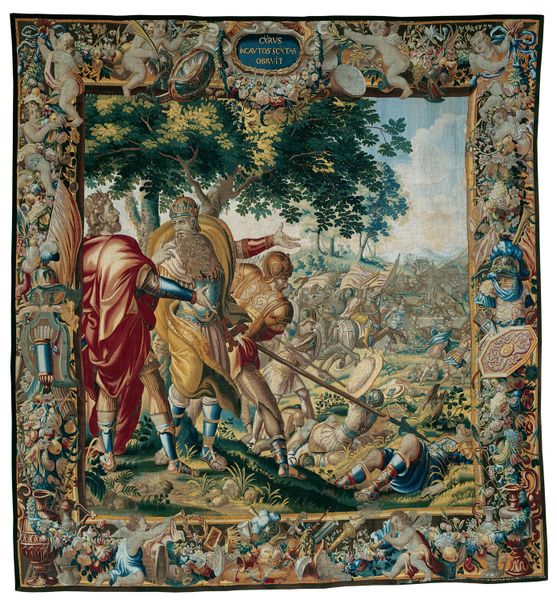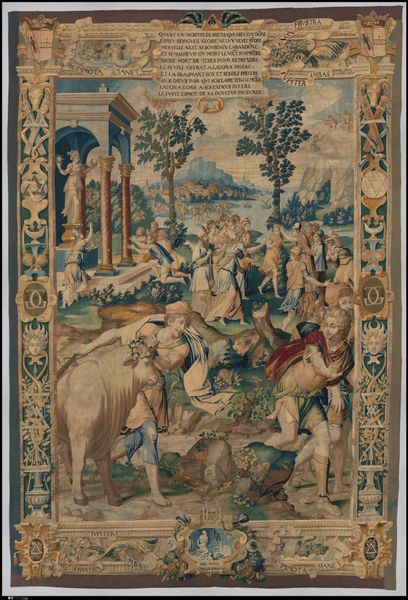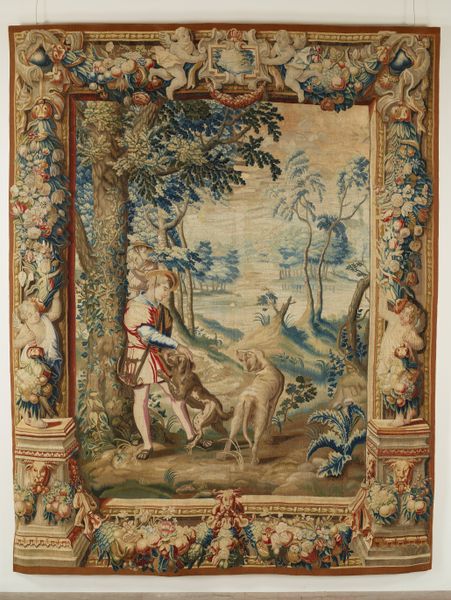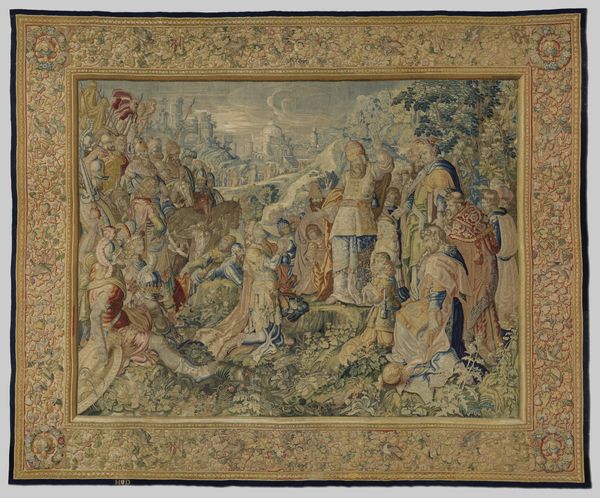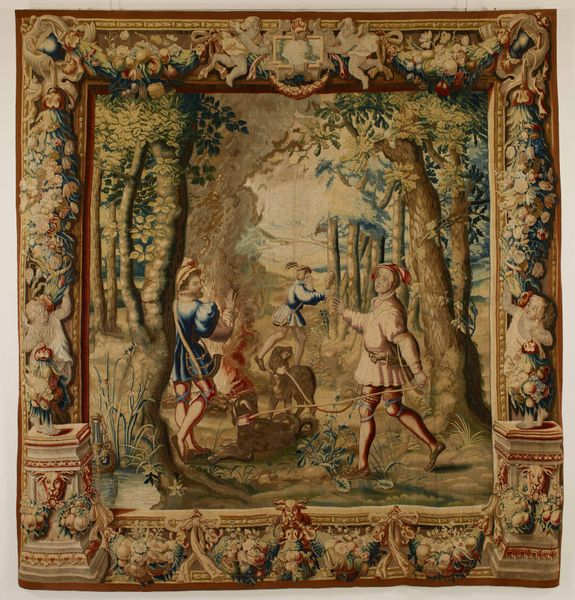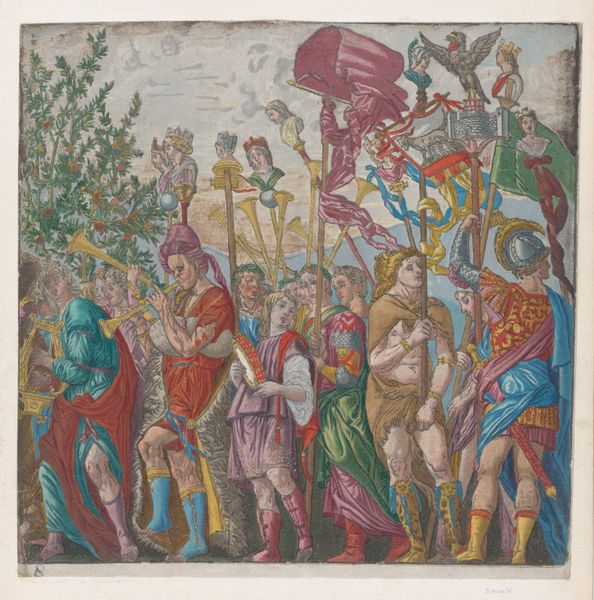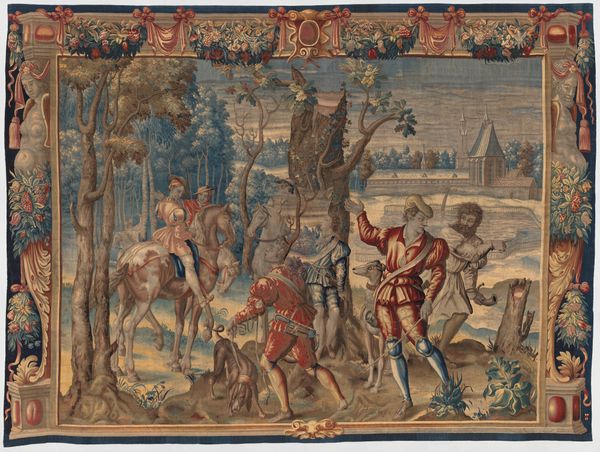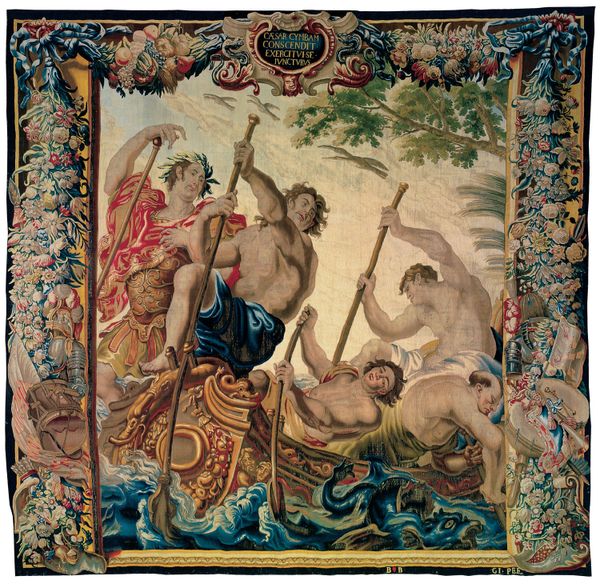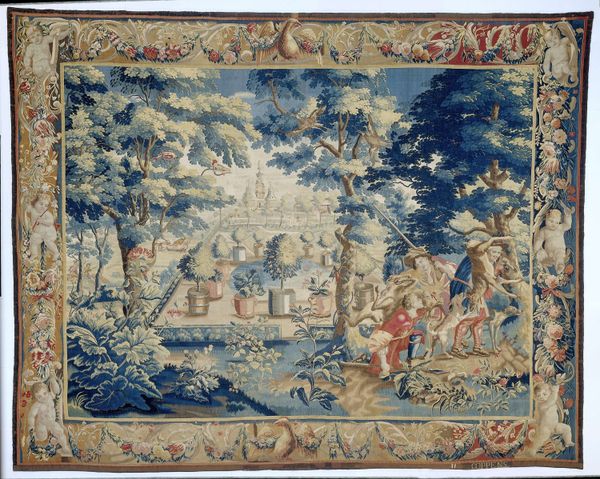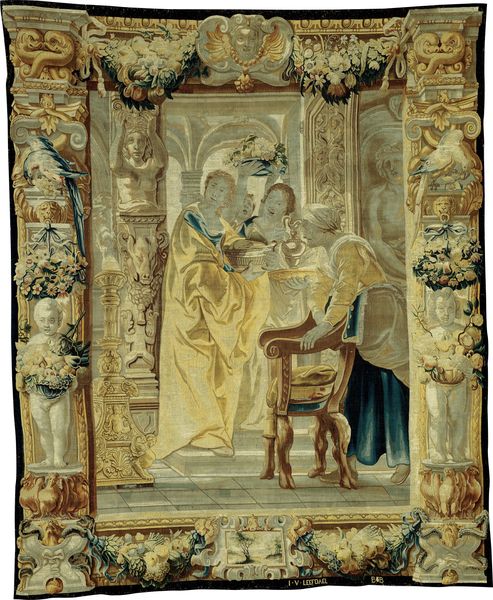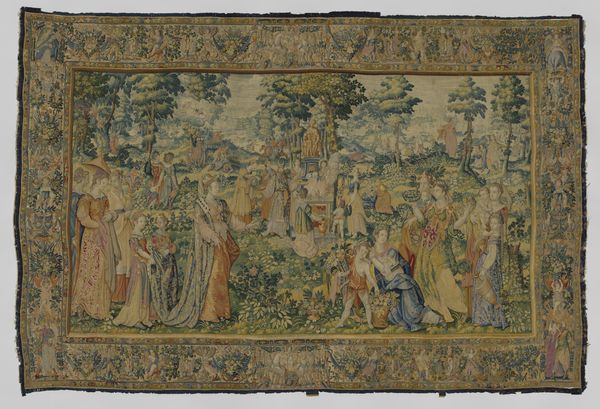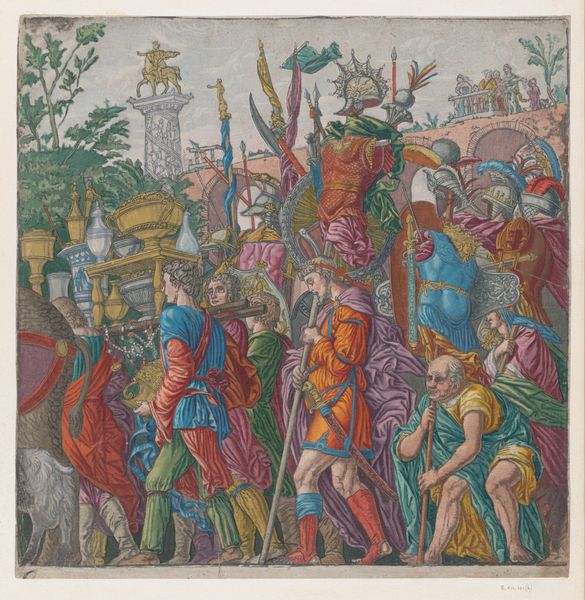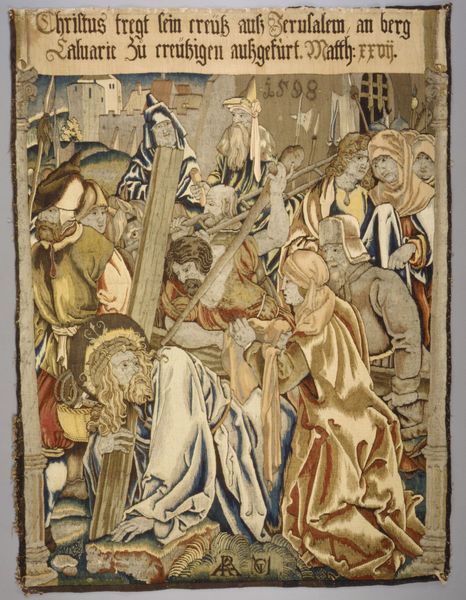
The Diversion of the Euphrates, from The Story of Cyrus c. 1670
0:00
0:00
weaving, textile, wool
#
medieval
#
narrative-art
#
weaving
#
textile
#
wool
#
text
#
oil painting
#
tile art
#
history-painting
Dimensions: 325.4 × 404.8 cm (128 1/8 × 159 3/8 in.)
Copyright: Public Domain
Editor: Here we have "The Diversion of the Euphrates, from The Story of Cyrus," made around 1670. It's a wool tapestry. It feels quite grand and theatrical, almost like a stage setting, with the border acting as the frame. What do you see in this piece? Curator: Indeed, the theatricality points us toward a careful construction of narrative. The diversion of the Euphrates wasn't merely an engineering feat; it was a symbolic act of dominance. Water, often associated with the feminine and the chaotic, is being controlled and re-directed by Cyrus, a figure of masculine order. What do you think the repeated weaponry signals? Editor: Hmm, power and conquest? The military is successful, the kingdom is safe? Curator: Perhaps. But also, consider how weaponry often represents a deeper psychological landscape. Swords, shields... these aren't just tools of war, but phallic symbols, protectors of identity. The abundance here hints at a culture obsessed with projecting power, warding off vulnerability through martial prowess. Notice how the borders, usually decorative, also include military emblems, repeatedly reminding the viewer of military power. Does that add or change the mood of the work for you? Editor: It definitely feels less celebratory and more about solidifying control. I see the text at the top now...it reinforces that narrative. Curator: Exactly. And that narrative is deeply ingrained in our cultural memory. This tapestry isn't just depicting history; it's reinforcing a certain way of understanding power, control, and the masculine ideal. Editor: I hadn't thought about the symbolism being so deeply layered. Seeing how even the decorative elements play into that understanding is really eye-opening. Curator: Visual symbols carry so much meaning. The work really speaks to cultural memory. I'm so glad we've spent time exploring it together.
Comments
No comments
Be the first to comment and join the conversation on the ultimate creative platform.
